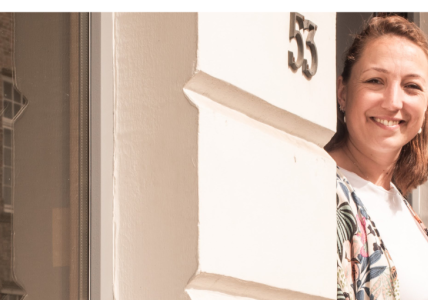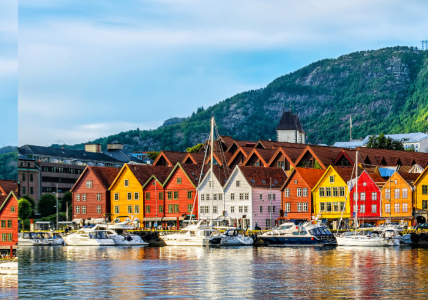The 2impresz project is enlisting the support of school children to reduce carbon emissions in their schools. It helps 141 schools across the North Sea Region reach 30% energy savings representing an emissions reduction of 7,320 tons of CO2 and transforming at least 4 schools into nearly zero-energy buildings. Approximately 20,160 students will have participated in the project’s Energy Challenges campaign this year alone!
Ellen Leys explains how 2impresz project partners
are facing the futurehand in hand with the next generation.
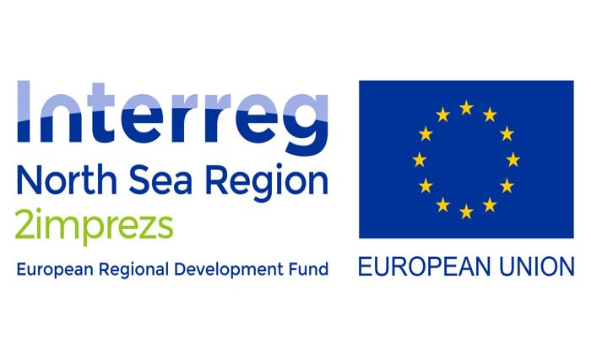
Leys explains that one of the unique features about the project is its focus on raising awareness in children about the issues of climate change whilst actively engaging them in implementing solutions in their own schools, aimed to reduce their daily energy consumption. In the project, children aged 10-14 cooperate and agree with the school management, teachers and politicians on how to implement the improvements needed – which can range from small energy saving measures and behavior change to the installation of new heating systems.
How exactly are the students engaged?
‘Children have a strategic and valuable role in the project,’ explains Ellen Leys. ‘They are considered “agents of change” and are involved in the core project activities, including carrying out energy audits for their schools, assessing the schools’ current energy set-up and designing a plan for improvements and energy savings.’
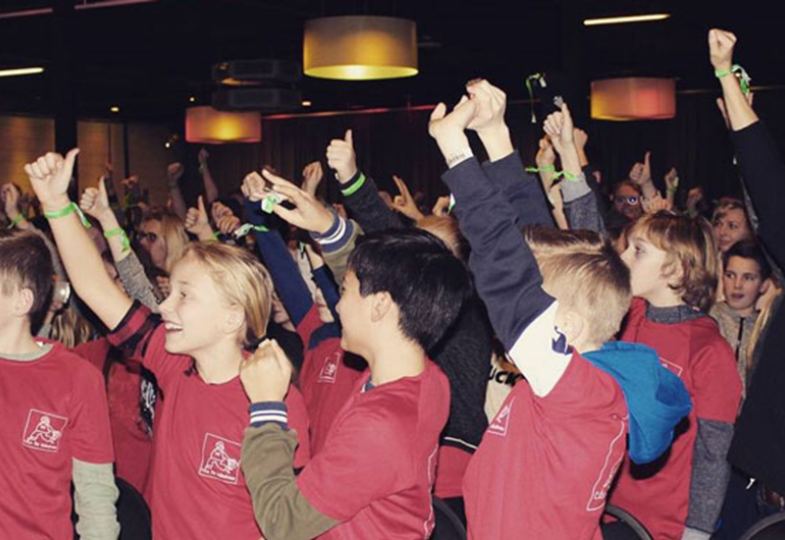
Students actively engaged in project activities
Leys explains that the project uses various exciting and innovative methods to involve and engage students in its work. For example, over the course of spring 2018, the project partner Mads Clausen Institute from the University of Southern Denmark (SDU) has developed a series of workshops aimed at high schools. The workshops have been developed with the help from staff from Sønderborg Statsskole in Denmark.
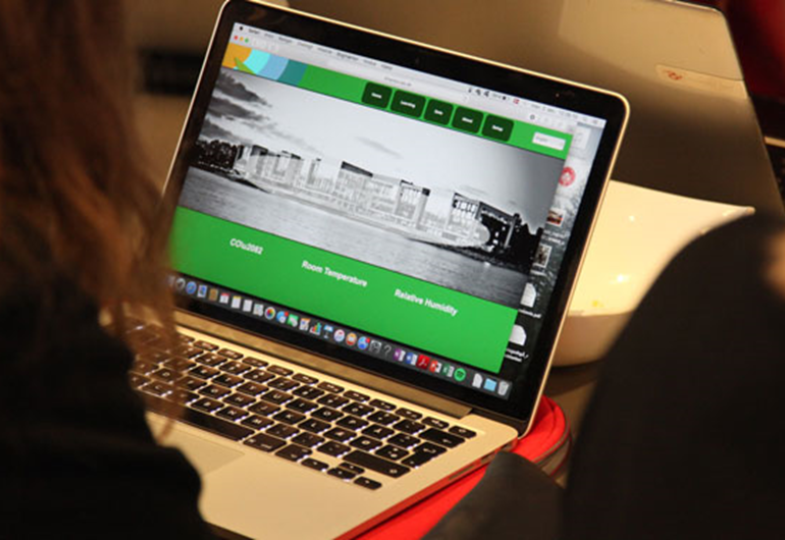
High school students using the Interactive Energy Optimisation and Decision Model (IEODM) developed by the project.
The workshops are part of a good-practice model of how to increase the awareness about energy and its consumption amongst young people in high school. They included a combination of lectures, hands-on experiments, investigations into the school’s energy consumption, calculations and, finally, a school assignment involving a paper where the students account for what they have learned and reflect on new possible energy-saving investments in the school.
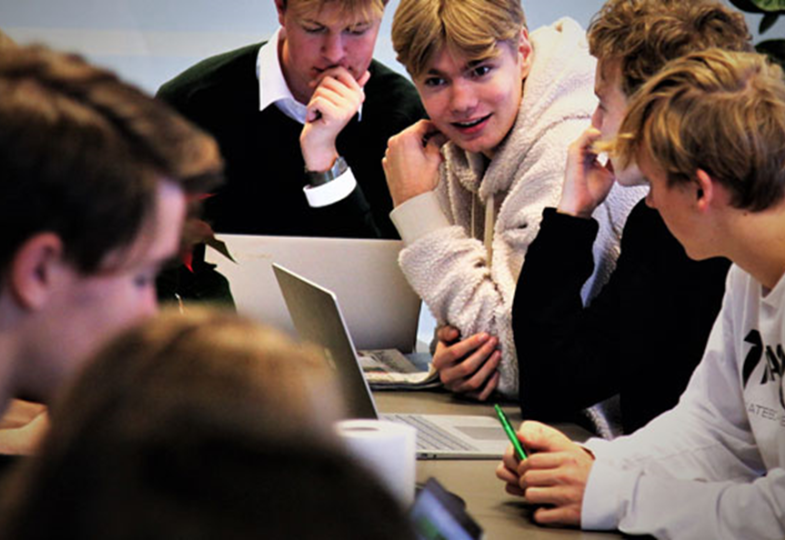
High school students engaged in discussion during one of the workshops
Sint-Jan Berchmans Secondary School in Puurs, Belgium has another approach to engaging students. Every year the students hold elections in order to form a new student government. A subcommittee of this student government is called the ‘Amigos’ and these are the students that want to make their school ‘greener’. The pupils have introduced a number of great initiatives and practices including providing reusable drinking bottles, encouraging fellow students to travel by bike and greening the school yard.
In the Netherlands, 500 students from more than 30 different schools gathered in the city of Groningen at the beginning of 2018 and were engaged in an Energy Challenges kick-off. The students are ‘energisers’ of their school, which means that they represent their school in the project and elaborate a campaign at school to motivate their co-students to save energy and carbon emissions.
The energisers from each school made a short introduction movie to engage the other students, and a compilation of movies was shown at the event. Furthermore students attended different workshops such as ‘Create a Banner’, ‘The Energy Challenge Rap Song’, ‘Static Electricity’ or ‘Young Researchers’. Student, Ward from the Netherlands and his friends state, ‘we are participating in the Energy Challenge because we hope the world will last us a very long time.’
Why cooperate with other schools across the North Sea?
Although the conditions of the partners’ school buildings can vary significantly, the schools engaged in the project have two things in common: all are using school buildings with saving potential and they all share a desire to save energy. Leys believes that the unique partnership mix from five different countries provides the perfect platform for the partners to exchange knowledge and guide one another. A school in one country which has already progressed in energy saving techniques can provide a wealth of support to a school which is starting out on its journey to becoming more climate-friendly.
Project partners are also using their country-specific experiences to design a joint Interactive Energy Optimisation and Decision Model (IEODM). The first version of this model is now complete and ready for presentation. ‘IEODM is a platform that students can access to learn about energy consumption at their school, compare their energy usage with other schools, get real time information on energy consumption at their schools and extract energy information to present saving potentials to their school board,’ explains Leys. Designed to appeal to children, the platform includes a mascot, which guides them through each section.
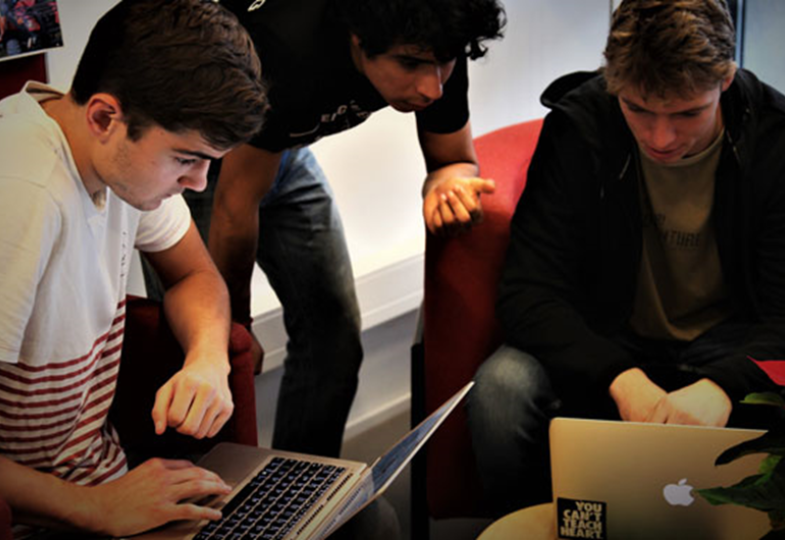
High school students using the Energy Optimisation and Decision Model (IEODM).
What sort of energy savings are we talking about?
The project makes a distinction between small and large (cost) energy saving measures. Small measures include: Insulation of pipes, LED-lights, radiator foil, power plugs with a timer or an on/off switch, and regulation of heating installations (in many schools, small adjustments in the heating installation can save up to 15% on their heating costs). These measures have a really short payback period (e.g. a few months or years). Larger energy saving measures include: roof insulation, wall insulation, new windows, new heating installation, and relighting.
‘Energy monitoring is another interesting measure that we want to stimulate in schools,’ outlines Ellen Leys. ‘Many schools don’t monitor their energy consumption. For example, if there is a water leak, sometimes schools do not notice this until they receive the water bill. By monitoring (preferably with automatic meter reading and data loggers) they get instant information about their energy usage. This is also a great, inspiring exercise for pupils. If they turn down the heating a little bit, they can see the result of this measure immediately’.
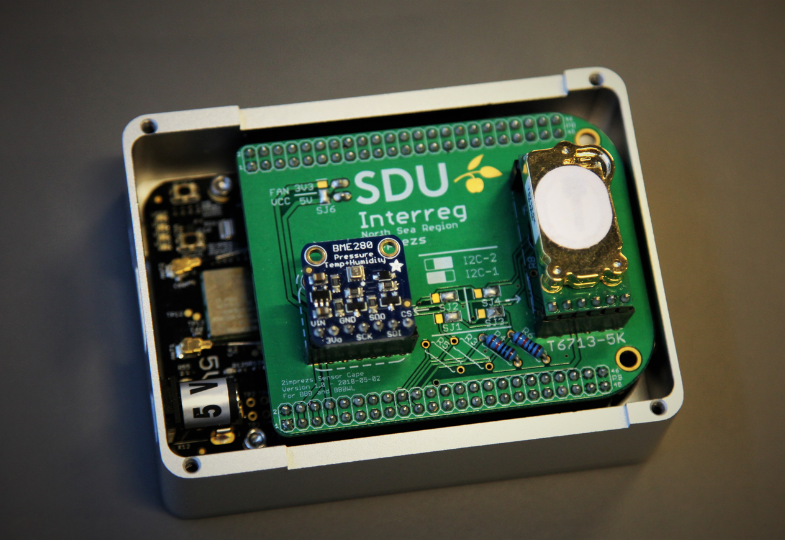
A prototype of the pocket-side sensors used to measure heat, humidity & CO2 emissions in classrooms using the 2IMPREZS interactive energy mesauring model.
What are the long-term effects of the project?
Leys reflects that one of the major effects of the project is behavioral change. ‘The children’s behavior will be shaped from an early age and they will hopefully continue to be climate-aware. But it doesn’t just stop at children,’ underlines Leys. ‘The behavior of teachers, politicians and parents will also be influenced by the project’s success as the benefits of energy saving measures become visible. They will witness how even the smallest of measures can help reduce the emission of carbon and lower the costs for school maintenance in the long term’.
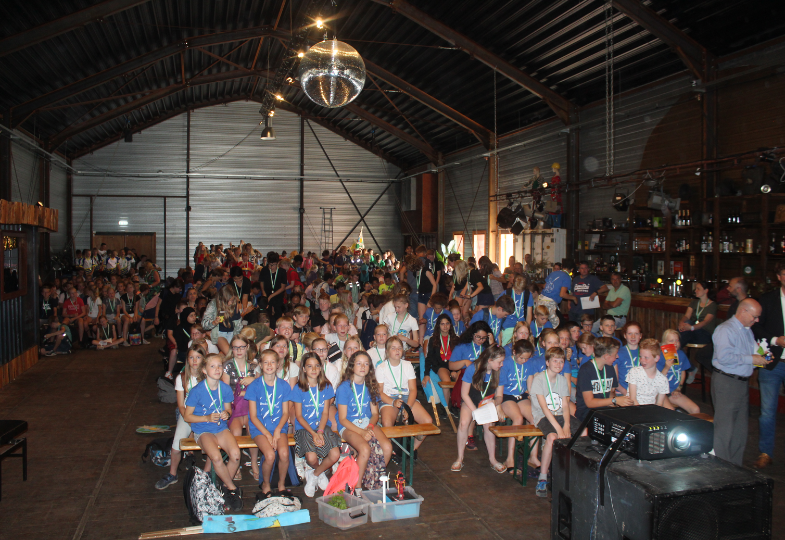
Encouraging students to become climate aware
It is anticipated that the energy-saving measures implemented during the project will be mainstreamed and integrated into the long-term set-up and maintenance of the participating schools. In addition, it is likely the projects activities will generate further investments in some schools. For example, the installation of a new school roof or windows.
Spreading the results and influencing other schools is also an important element of the project. Leys concludes that the project has developed regional networks in order to share its work on, for example, energy monitoring, with other schools not engaged in the project. Teachers and umbrella organisations outside of the project will be invited to join the network to learn about the initiatives undertaken and the approach of using children as ‘agents of change’. They will be inspired to promote similar initiatives and implement energy saving steps within their own schools.
Are you keen to learn more about the project? Check out their website for latest updates.
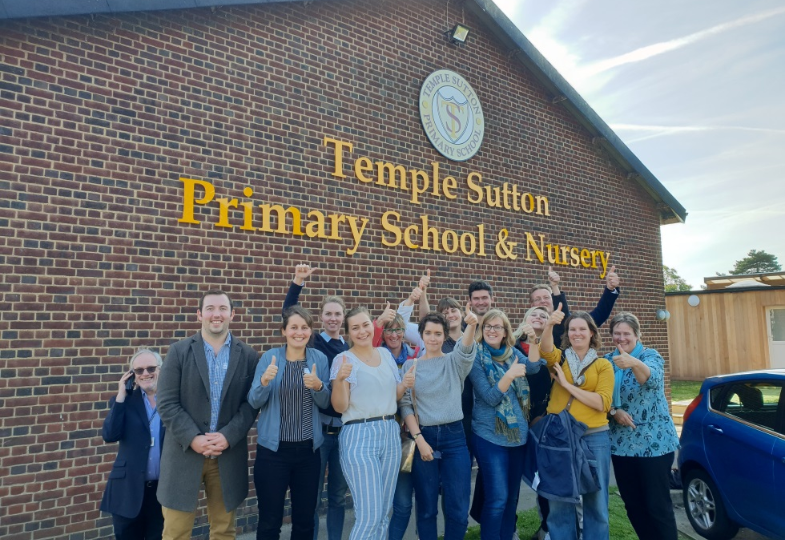
The 2impresz partnership outside Temple Sutton School in Southend-on-Sea, England.
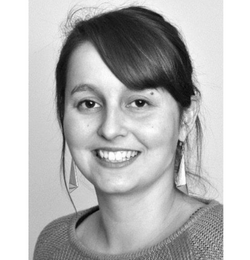
Ellen Leys is managing the 2impresz project.
